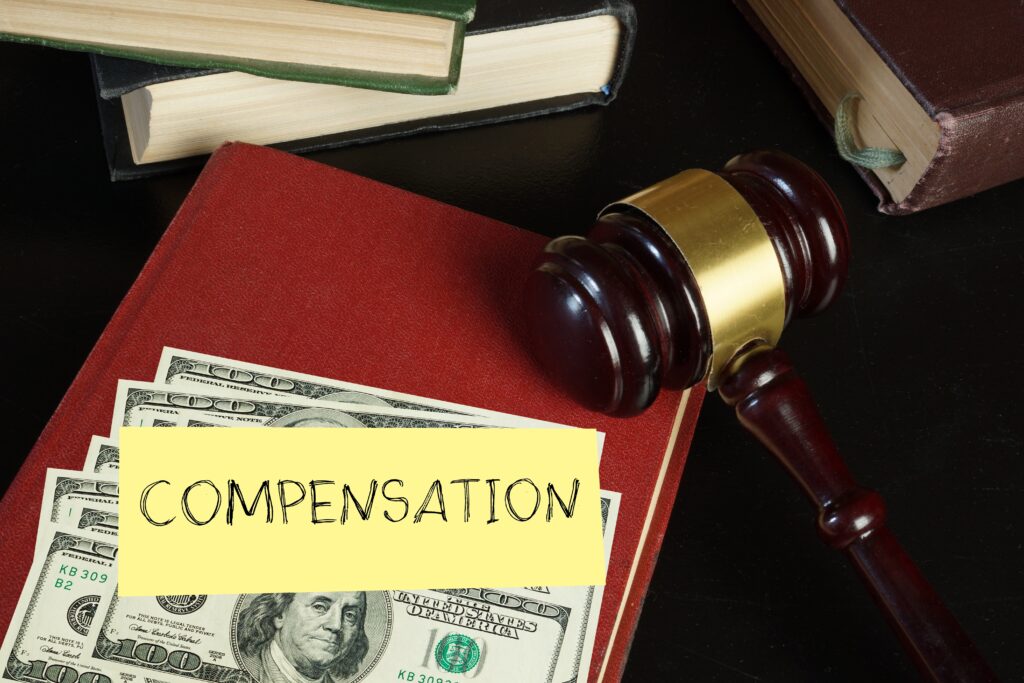The most common causes of motorcycle accidents almost always boil down to one unfortunate fact: other drivers fail to see the motorcycle.
Whether it’s a car making a sudden left turn, a truck changing lanes without checking its blind spot, or a driver distracted by their phone at an intersection, the story is often the same.
The good news is you have options and a transparent process for getting the support you need. If a motorcycle accident has injured you, an Edmonton motorcycle accident lawyer can help—let’s talk.
Call us at (888) 664-5298 for a straightforward conversation.
GET YOUR FREE CONSULTATION NOW!
The Main Causes: Edmonton’s Motorcycle Accidents, Ranked
1. Driver Inattention and Distraction

Distracted driving leads the pack in Edmonton motorcycle collisions. Phones buzz, drivers check maps, eat fries, mess with playlists. A rider signals a lane change, but the car next to them never sees it. According to Alberta’s distracted driving law, using a hand-held phone at the wheel is illegal, but not everyone listens.
Lawyers prove distraction with dash cam footage, witness statements, even cell phone records. If a driver looks away, even for a second, they risk another person’s life. No text or TikTok is worth the aftermath.
2. Left-Turn and Failure-to-Yield Collisions
One of the deadliest scenarios: a driver tries a quick left across traffic. The motorcycle approaches, driver thinks they have space, they don’t. Impact speed is high. These accidents aren’t rare—they’re among the most severe for Edmonton riders. Alberta’s Traffic Safety Act lays out who must yield, but in the real world, many drivers gamble and lose.
Intersection accidents often result in severe injuries due to a failure to yield or observe other vehicles.
3. Unsafe Lane Changes and Blind Spots
Lane changes without proper shoulder checks or signals cause serious crashes. Motorcycles disappear in the “no-zone” beside big vehicles. In Edmonton’s daily gridlock, a sudden lane shift can force a rider onto the curb or into a car.
If a car merges into your lane and you have nowhere to go, the law calls that negligence. Comparative negligence sometimes comes up—maybe the rider was in a blind spot, maybe the driver failed to check. Police and lawyers dig through dash cams, GPS data, and witness accounts to sort out what actually happened.
4. Speeding and Reckless Driving
High speed means high stakes. Speeding, whether by a driver or a rider, dramatically increases the risk of severe accidents. It compromises reaction time, extends stopping distances, and can turn minor errors into serious incidents.
Speeding also affects insurance and compensation under the Alberta Insurance Act. If someone speeds and causes a crash, their insurer usually pays, but the details can get complicated if both parties break the rules.
Less Common Causes of Motorcycle Accidents in Edmonton
Impaired Driving: Alcohol and Drugs
Alcohol, cannabis, and even prescription drugs mess with judgment and slow down reaction times. Edmonton Police remove impaired drivers from the road, but riders often suffer the most severe consequences when substance use and driving combine.
Criminal charges for impaired driving usually go hand in hand with civil claims. If the other driver faced criminal conviction, that helps prove fault in your injury claim. You deserve to hold them accountable.
Poor Road Surfaces and Environmental Hazards
Edmonton’s challenging weather significantly impacts road conditions. In spring, the roads often accumulate loose gravel, sand, and develop deep cracks, which can easily cause a motorcycle to lose traction. Potholes are a persistent issue throughout the season. By July, navigating the city’s roads, particularly Jasper Avenue, can feel like an off-road experience due to their deteriorating state. Additionally, construction zones frequently introduce new hazards such as debris, uneven pavement, or equipment that may be left unattended after hours.
If a neglected road, debris, or poor signage caused your crash, Alberta law allows you to make a claim against the city or province. The process demands strong proof. You must show the road hazard wasn’t fixed in a reasonable time and that it caused your crash. Lawyers use photos, maintenance records, and even city repair logs.
Mechanical Failures and Poor Maintenance
Sometimes, it’s not another driver or a pothole—it’s the bike itself. Mechanical failures trigger sudden and brutal crashes. Think tire blowouts, worn brakes, or throttle cables that snap at the wrong moment. Even a tiny part can cause a wreck. Some of these cases involve product liability if the manufacturer built a defective part. Others happen when a shop forgets a bolt or skips a check.
It matters how well you maintain your motorcycle. But if the shop or parts maker caused the failure, you have the right to claim for injuries, lost wages, and damage. Evidence matters. Keep service records and any recall notices.
What Injuries Happen in Edmonton Motorcycle Accidents?
Riders don’t have crumple zones, airbags, or steel shells. That means when things go wrong, they go really wrong. Common outcomes in Edmonton include:
- Traumatic brain injuries, even with a helmet
- Spinal cord injuries that change everything, from movement to independence
- Multiple broken bones, road rash, and soft tissue injuries that never fully heal
- Deep psychological trauma—nightmares, flashbacks, anxiety, sometimes full-blown PTSD
Lost Income and Changing Your Life
The road back from a motorcycle injury means medical appointments, therapy, sometimes surgery, and lost time at work. Many riders face permanent changes—they can’t do their old jobs, need to retrain, or never get back on a bike.
Alberta courts look at what you lost, what you could earn before the crash, and what you might earn now. The difference shapes your compensation. Document your earnings and all the ways your injury changed your work life.
Navigating the Insurance Maze: Section B Benefits
After an accident in Alberta, the first layer of support comes from your own insurance policy, regardless of who was at fault. Every standard auto policy in the province includes mandatory “Section B” or “no-fault” benefits.
The purpose of these benefits is to provide immediate access to medical and disability support without waiting for a legal claim to be resolved. Under the Alberta Insurance Act, your insurer is obligated to cover necessary treatments.
What Section B Covers
Section B benefits provide coverage for reasonable and necessary medical expenses up to a maximum of $50,000 per person. This includes things like:
- Physical therapy
- Chiropractic treatments
- Dental work
- Psychological counseling
- Ambulance services
- Prescription medication
If your injuries prevent you from working, Section B also provides a modest level of income replacement. You could be entitled to benefits for as long as your injuries persist, up to a certain weekly maximum
The “Cap”: Alberta’s Minor Injury Regulation
The path to compensation in Alberta has a significant feature you need to know about: the Minor Injury Regulation (MIR).The government created this regulation to limit the amount of money paid for pain and suffering for injuries classified as “minor.”
What Is a “Minor Injury”?
This is a specific legal term. Under the MIR, a minor injury is defined as a sprain, a strain, or a whiplash-associated disorder (WAD) that doesn’t result in a “serious impairment.” A 2020 update also includes any related psychological symptoms that stem from these injuries, as long as they also do not cause a serious impairment.
A “serious impairment” is a substantial inability to perform your regular work duties, continue your education, or manage your normal daily activities.
How the Cap Works
If your injury is deemed to fall under the MIR, there is a “cap” on the amount you can receive for your pain and suffering (also called non-pecuniary damages). A lawyer will review your case to see whether it applies. One thing to note is that insurance companies often try to classify injuries as minor to limit their payout. But the determination of whether an injury is truly “minor” under the law is complex and is not up to the insurance adjuster—even if they make it seem like it when they try to lowball you.
The cap applies only to the pain and suffering portion of your claim for these specific minor injuries. It does not limit your ability to claim other financial losses.
Compensation Beyond the Cap: What Your Claim Can Cover

Even with the MIR, a personal injury claim is designed to restore you to the financial position you would have been in if the accident had never happened. Since Alberta Health Services covers most emergency and hospital care, your claim focuses on the other profound losses you’ve suffered.
Your claim for damages can cover:
- Pain and Suffering: For serious injuries that fall outside the cap (like fractures, brain injuries, or chronic conditions), this compensation is meant to address the loss of enjoyment of life and the physical pain you endure.
- Loss of Income and Earning Capacity: This covers not just the wages you’ve already lost but also the income you will lose in the future if your ability to work is permanently affected.
- Cost of Future Care: This includes any ongoing medical treatments, therapy, home modifications, or attendant care you will need for the rest of your life.
- Out-of-Pocket Expenses: This covers costs for things like travel to medical appointments, medications not covered by Section B, and other expenses directly related to your injury.
- Damaged Property: Your claim can include the cost to repair or replace your motorcycle and any other damaged personal property.
Insurance companies and courts look at every detail. That’s why clear records, strong evidence, and honest answers matter at every stage.
FAQ for Common Causes of Motorcycle Accidents in Edmonton
We advise against repairing or disposing of your motorcycle immediately. It is a key piece of evidence. The damage to your bike helps reconstruct the accident and demonstrates the force of the impact. Preserve it as-is until it has been inspected and photographed by your legal counsel.
Lane-splitting—riding between lanes of stopped or slow-moving traffic—remains illegal in Alberta. If a crash happens while lane-splitting, insurance companies and courts assign some or all fault to the rider. Police reports matter. If you avoid lane-splitting, you protect your safety and your claim.
If a deer, moose, or other animal caused you to lose control, you might claim under your own insurance for property damage or Section B benefits. If poor signage, broken fencing, or overgrown vegetation contributed, you might have a case against the city or province. Proof matters, so take photos and file a police report.
Riders need a valid Class 6 licence in Alberta. If you rode without the right licence or violated licensing laws, insurers might reduce your payout under comparative negligence. You still have rights, but your share of responsibility affects your compensation.
Not necessarily. While the other driver’s negligence is often the primary cause of an accident, all road users must act reasonably. If it’s clearly argued that your inexperience contributed to the accident, Alberta’s laws on comparative negligence could come into play. This means a court could assign a percentage of fault to each party, which would reduce your final compensation amount by your percentage of fault. However, being new to riding does not automatically make you at fault.
Alberta law requires motorcycle helmets for all riders. Not wearing one puts you at risk physically and financially. If you weren’t wearing a helmet and suffered a head injury, your compensation may be reduced under comparative negligence, but you can still recover damages for other injuries.
Ride Forward with MNH Injury Lawyers
Every motorcycle crash has a cause, and you deserve to understand what happened and pursue a path to recovery.
With MNH Injury Lawyers, you gain advocates who stand up for your interests. An Edmonton personal injury lawyer can help you claim what Alberta law says you deserve. Your injuries, lost wages, and future matter.
You’ve already come this far—take the next step. Call MNH Injury Lawyers at (888) 664-5298 today for a free, confidential consultation.
